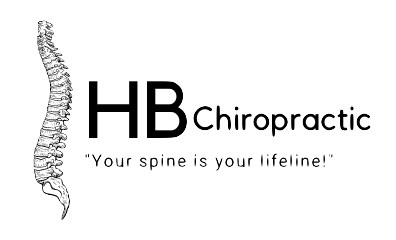Headache & Migraine
Headaches usually occur when the pain-sensitive parts are infected, inflamed, pulled, compressed, stretched, or irritated. Chiropractic care uses natural, drug-free methods to treat headaches by eliminating spinal subluxations. The entire body can have a greater level of health and wholeness through chiropractic care.
**References: Chiropractic: Bringing Out the Best in You! An Introduction 7th Edition Tedd Koren, D.C.
Neck Problems
Neck problems and whiplash can cause headache, numbness, coldness in the face, chest, arms, wrists or hands. There can be anxiety, insomnia, low back pain, ear ringing, dizziness, hearing loss, eye pain and other symptoms as a result. Chiropractic has helped millions suffering from neck and whiplash problems, using natural methods.
There are 7 neck bones and each of them play a role in supporting your head. Your neck allows you to move your head in different directions. Your vertebrae work together to protect your spinal cord and balance your head. The protection is important Your neck can go through many stresses throughout your life. Some examples of stresses are an accident, difficult birth, emotional tension, and working in one position for a long period of time. Sufferers of neck pain may complain about headaches, dizziness, ringing in ears, vision problems, memory impairments, emotional changes and much more.
You may lose your normal neck curve and suffer from pain when the spine is unhealthy. There may be nerve irritation and disc degeneration also. One of the main causes of disc degeneration is years of subluxations going uncorrected. Most standard medical approaches to neck pain are typically painkillers, muscle relaxers, and/or tranquilizers. Surgery is sometimes needed, especially in severe trauma or disc herniation. Chiropractic techniques have saved people from disc or neck surgery. Subluxations, severe form of stress, are corrected by chiropractic care.Through corrections, there is restoration of the spinal column, permitting increased energy, information and nutrients to flow throughout the body. There is rebalance in the body. Chiropractic care is necessary to permit your body to experience greater healing and well-being. *
*References: Chiropractic Pamphlet
Low Back Pain
Chiropractic care relieves chronic and severe pain, immediate and long term, in half the time it takes medical physicians. The medical treatments for back pain vary depending on the conditions. Pain killers, muscle relaxants and other therapies such as traction, ultra sound and others are sometimes used. These approaches can alleviate pain temporarily but if the problem continues or worsens then surgery may be recommended. Many patients who have had back surgery report a recurrence of symptoms within a couple of years from the operation and may return to surgery. Chiropractors have helped millions with low back problems, saving them from pain, drug use, surgery, and disability. The chiropractic approach is to rebalance and realign your spine and body to relieve pressure on nerves, discs and muscles. *
*References: Chiropractic Pamphlet
Accidents & Trauma
After an accident, seeking chiropractic care is essential. Chiropractic care never opposes necessary medical care after a person has an accident/trauma. The damage to the spine could take months or years to surface. That is why it is important for a spinal check up, to avoid later damage. Subluxations created from an accident or trauma often remain in your body and prevent proper healing. Chiropractic care can help the victims of accidents to completely recover so they are not reliable on painkillers for years.**
**References: Chiropractic: Bringing Out the Best in You! An Introduction7th Edition Tedd Koren, D.C.
Disc Problems & Back Surgery
The discs in your back are little pads that lie between your vertebrae. They are shock absorbers, cushioning the bones. Disc herniations can be protrusions or prolapses. Protrusion can occur if there is bulging of the disc. Prolapse occurs when there is so much bulging that the disc separates.
This can cause severe pain which can make moving nearly impossible. Occasionally, spinal surgery is necessary, but chiropractic care could save thousands of back pain sufferers from unnecessary spinal surgery. Spinal surgery can cost anywhere from $2,500 to $85,000, and can have extended recovery time of multiple weeks to months (more info). If surgery is ineffective, there could be several more that are unsuccessful. Anyone with disc problems should talk with a Chiropractor.
**References: Chiropractic: Bringing Out the Best in You! An Introduction 7th Edition Tedd Koren, D.C.
Sciatica & Leg Pain
The sciatic nerve is the longest and largest in your body. When there is inflammation of the nerve it is called sciatica. Sciatica sufferers often have severe pain in the back of the legs and thighs. Sometimes the pain can be felt in the ankle, foot and toes too. Sleeping, sitting, walking, bending, turning or standing may be difficult or impossible. Chiropractic care can dramatically relieve sciatica and leg pain. Chiropractic care appears to have the most profound effect on sciatica when problems first occur and painkillers and surgery can be avoided. **
**References: Chiropractic: Bringing Out the Best in You! An Introduction 7th Edition Tedd Koren, D.C.
Shoulder, Arm & Hand Problems
There can various symptoms when different nerves are affected. If the nerves going to the shoulder, arm and hand are affected then there may be symptoms of pain, tingling, tightness, weakness, pins-and-needles, or others. There can be many causes for the nerves to get “pinched”, which include: long-standing spinal stress, old/new injuries, accidents, arthritis, and chronic emotional tension. There may be neck stiffness or pain may radiate to the shoulder or down the arm. Due to the way nerves interrelate, complications can cause headaches, migraines, face pain, dizziness, and low back pain. Chiropractic care relieves nerve stress and permits the spine to function with normalcy.
**References: Chiropractic: Bringing Out the Best in You! An Introduction 7th Edition Tedd Koren, D.C.
